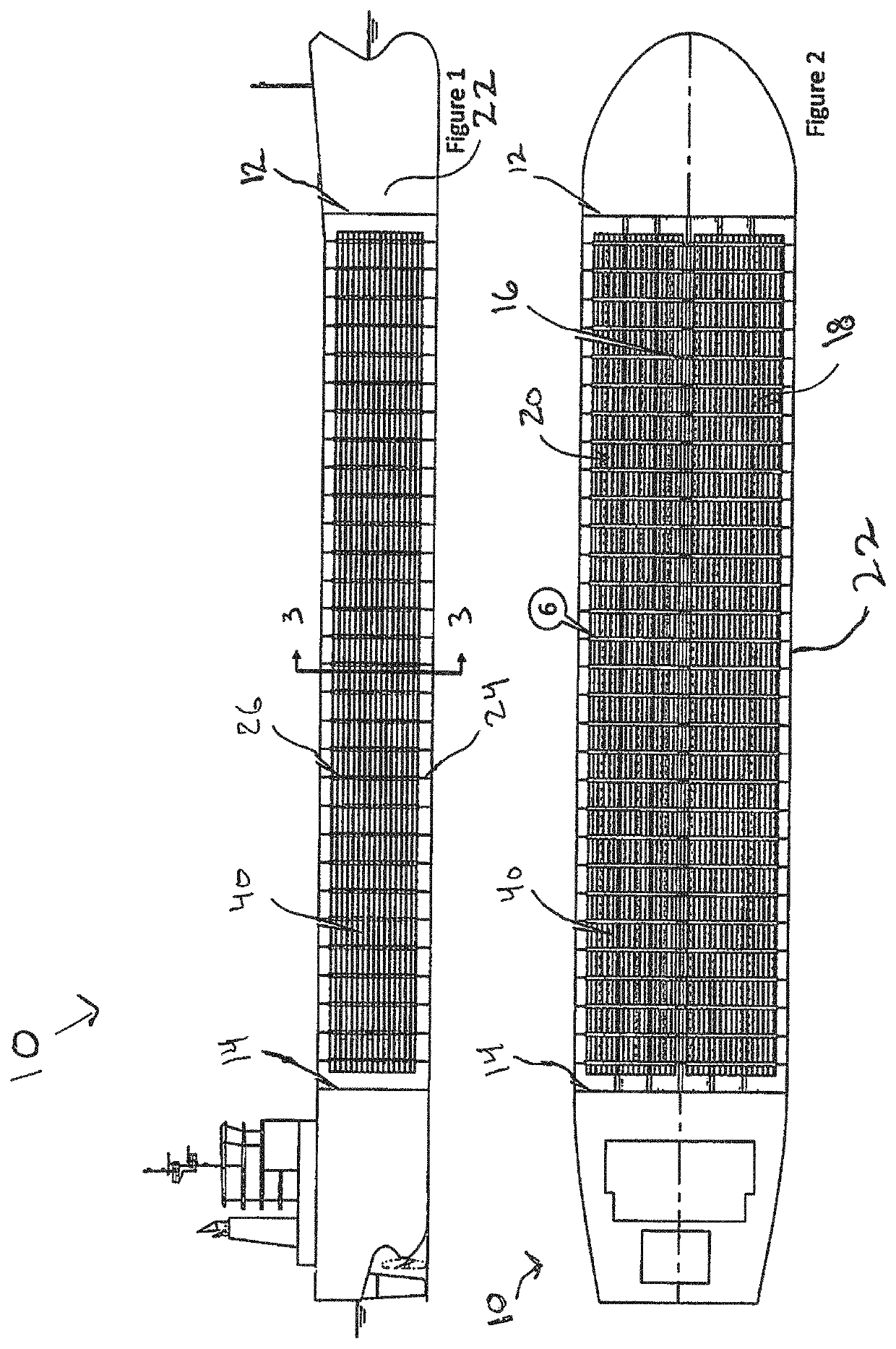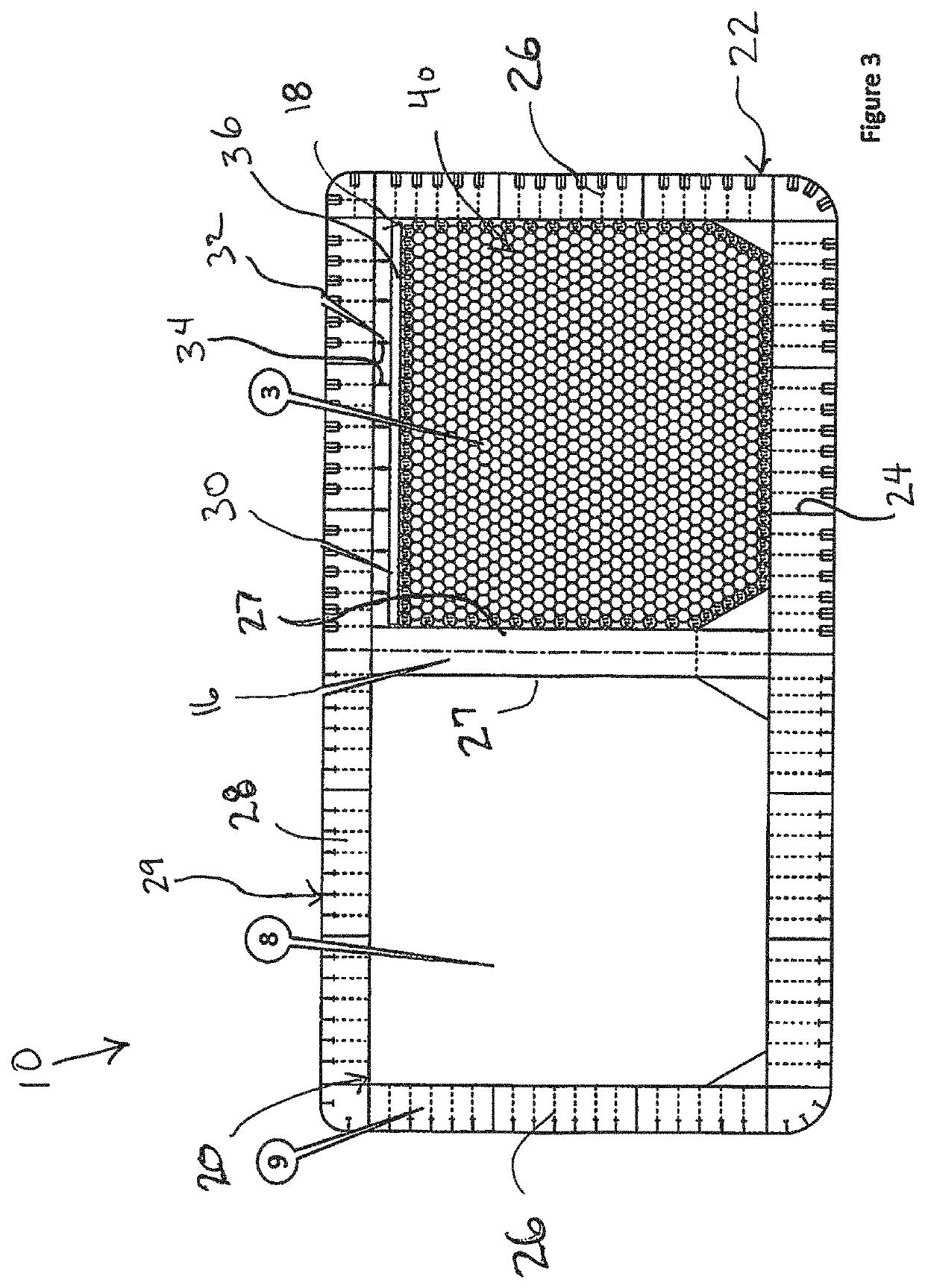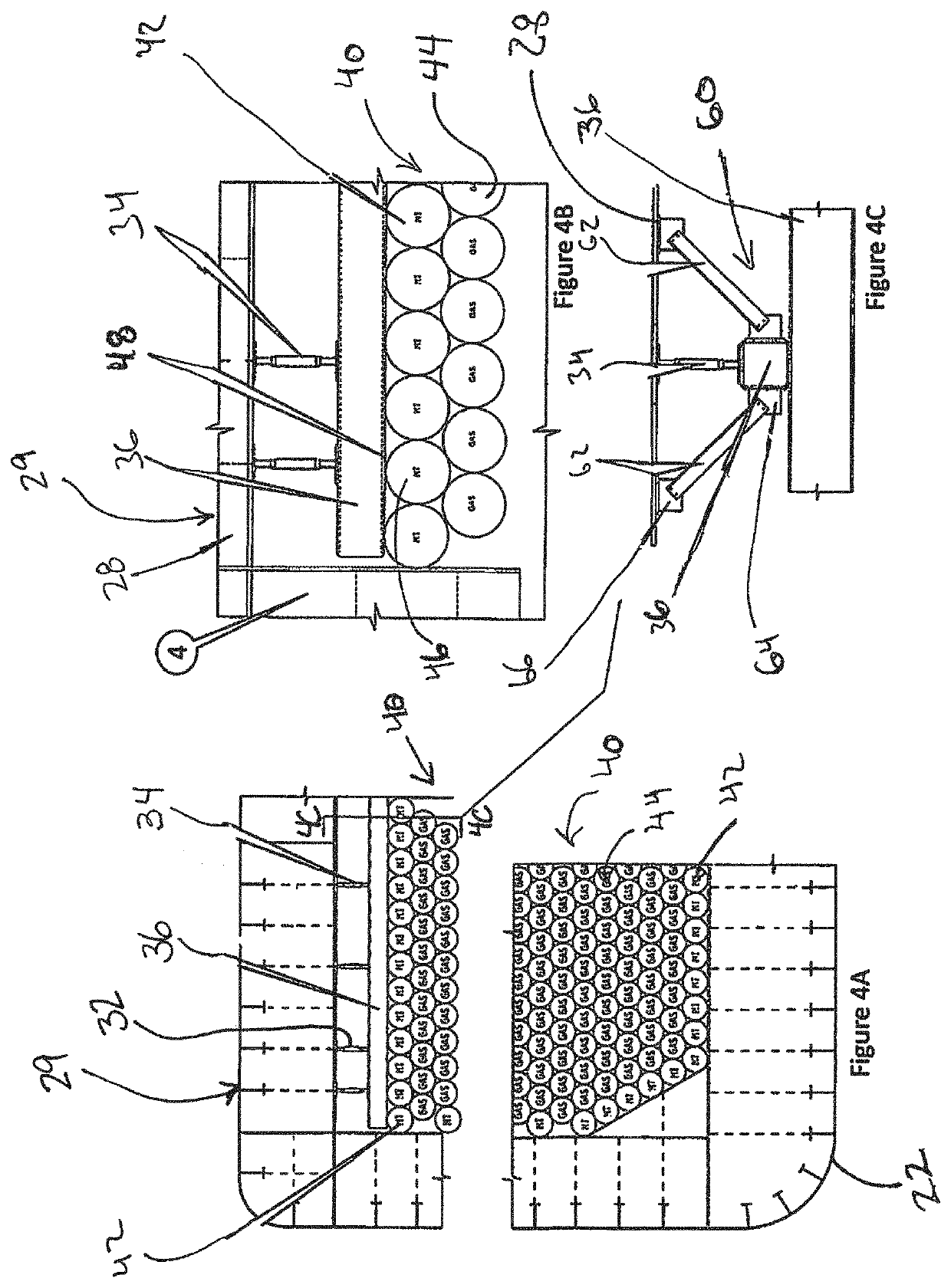Pipe containment system for ships with spacing guide
a technology of pipe containment and spacing guide, which is applied in the direction of container filling under pressure, transportation and packaging, and load accommodation, etc. it can solve the problems of inability to provide a cost effective cng ship or barge, the cost of a cng containment system that is suited to ship or barge transport, and the inability to meet the needs of ships and barges. to achieve the effect of reducing the cost of ships
- Summary
- Abstract
- Description
- Claims
- Application Information
AI Technical Summary
Benefits of technology
Problems solved by technology
Method used
Image
Examples
Embodiment Construction
[0064]The description that follows and the embodiments described therein, are provided by way of illustration of an example, or examples, of particular embodiments of the principles of various aspects of the present invention. These examples are provided for the purposes of explanation, and not of limitation, of those principles and of the invention in its various aspects. In the description, similar parts are marked throughout the specification and the drawings with the same respective reference numerals. The drawings are not necessarily to scale and in some instances proportions may have been exaggerated in order more clearly to depict certain features.
[0065]A compressed gas transport assembly is disclosed. The assembly of the invention may be installed on or in a ship or barge for marine transport of compressed gas such as CNG. For the purpose of this detailed description of the embodiments a ship is shown with the assembly inside the ship's hull. This is intended as a means of d...
PUM
 Login to View More
Login to View More Abstract
Description
Claims
Application Information
 Login to View More
Login to View More - R&D
- Intellectual Property
- Life Sciences
- Materials
- Tech Scout
- Unparalleled Data Quality
- Higher Quality Content
- 60% Fewer Hallucinations
Browse by: Latest US Patents, China's latest patents, Technical Efficacy Thesaurus, Application Domain, Technology Topic, Popular Technical Reports.
© 2025 PatSnap. All rights reserved.Legal|Privacy policy|Modern Slavery Act Transparency Statement|Sitemap|About US| Contact US: help@patsnap.com



